Intel Haswell-EP Xeon 12 Core Review: E5-2650L V3 and E5-2690 V3
by Ian Cutress on November 6, 2014 9:00 AM EST- Posted in
- CPUs
- IT Computing
- Intel
- Xeon
- Enterprise
- LGA2011-3
- Haswell EP
Linux Performance
Built around several freely available benchmarks for Linux, Linux-Bench is a project spearheaded by Patrick at ServeTheHome to streamline about a dozen of these tests in a single neat package run via a set of three commands using an Ubuntu 14.04 LiveCD. These tests include fluid dynamics used by NASA, ray-tracing, OpenSSL, molecular modeling, and a scalable data structure server for web deployments. We run Linux-Bench and have chosen to report a select few of the tests that rely on CPU and DRAM speed.
Unfortunately due to the different time windows we had these CPUs and the time of introduction of Linux-Bench into the normal testing suite, we only have results for the 2P and 1P E5-2650L V3 configurations.
C-Ray: link
C-Ray is a simple ray-tracing program that focuses almost exclusively on processor performance rather than DRAM access. The test in Linux-Bench renders a heavy complex scene offering a large scalable scenario.
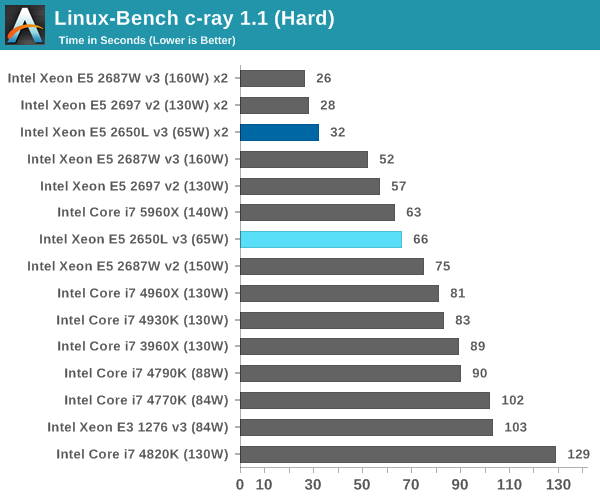
p7zip Compression and Decompression
7-Zip is a common open source compression and decompression tool for data transfer.
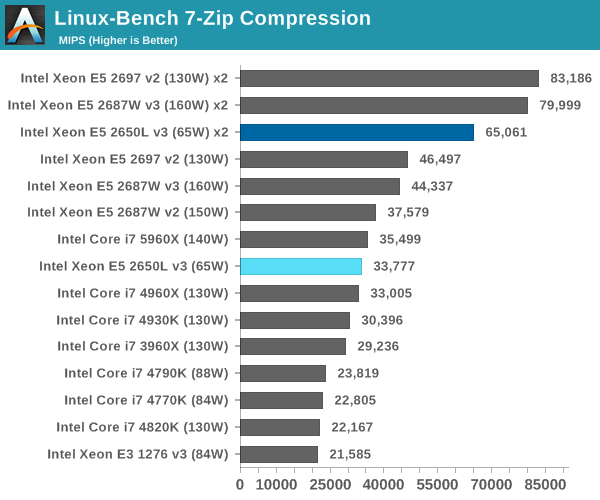
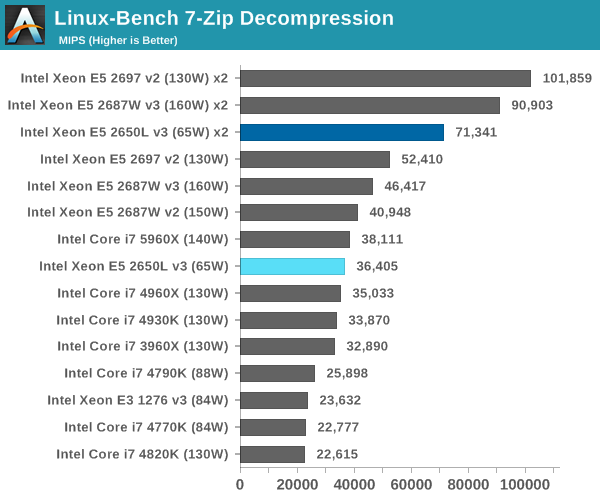
NAMD, Scalable Molecular Dynamics: link
Developed by the Theoretical and Computational Biophysics Group at the University of Illinois at Urbana-Champaign, NAMD is a set of parallel molecular dynamics codes for extreme parallelization up to and beyond 200,000 cores. The reference paper detailing NAMD has over 4000 citations, and our testing runs a small simulation where the calculation steps per unit time is the output vector.
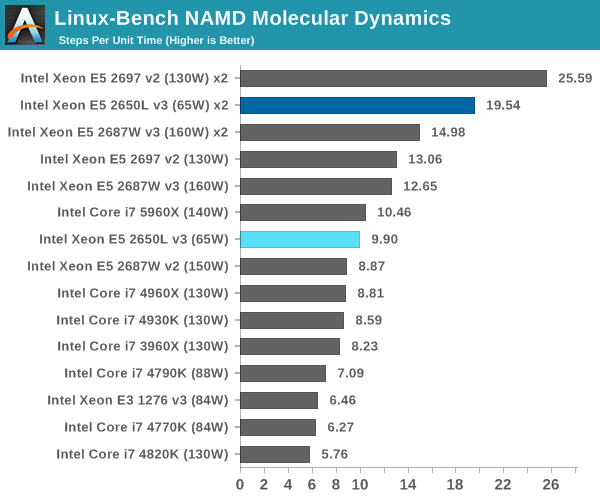
NPB, Fluid Dynamics: link
Aside from LINPACK, there are many other ways to benchmark supercomputers in terms of how effective they are for various types of mathematical processes. The NAS Parallel Benchmarks (NPB) are a set of small programs originally designed for NASA to test their supercomputers in terms of fluid dynamics simulations, useful for airflow reactions and design.
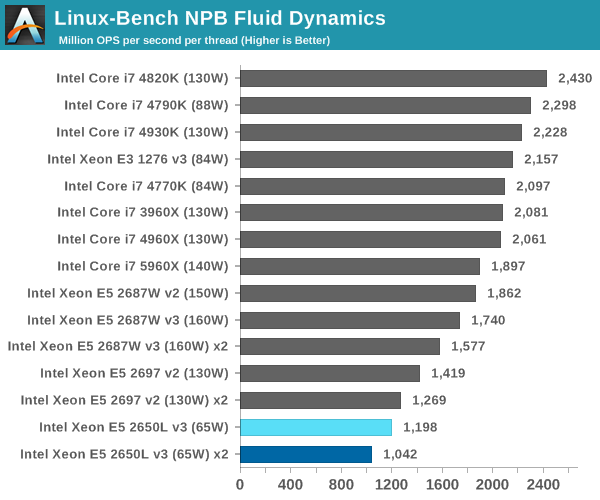
OpenSSL Sign/Verify
OpenSSL is the platform that secures the majority of the websites we visit, and being able to issue/verify this security is paramount to performance. We test the rates at which OpenSSL certificates are signed and verified.
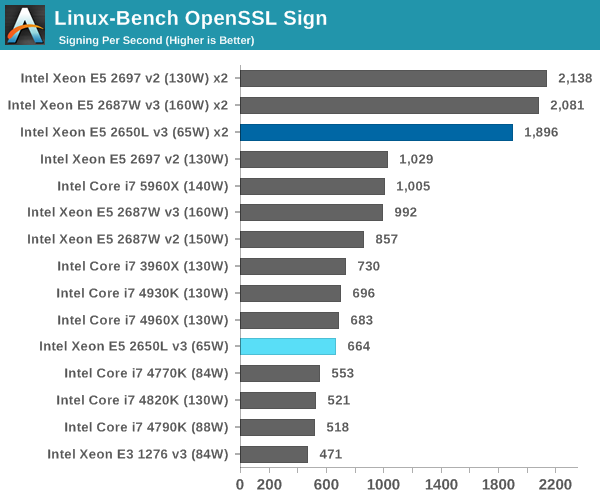
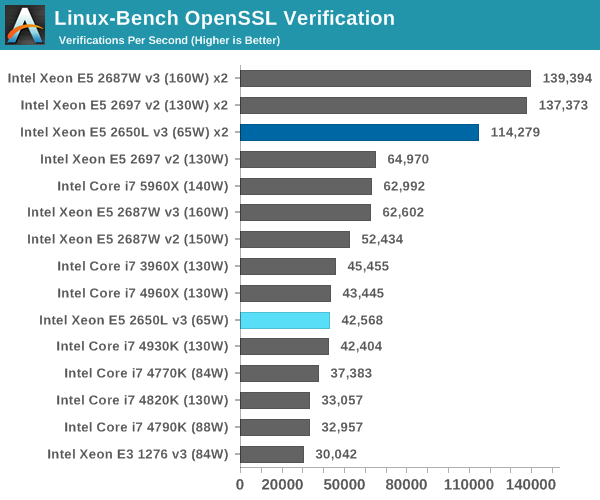
Redis: link
Many of the online applications rely on key-value caches and data structure servers to operate. Redis is an open-source, scalable web technology with a srtong developer base, but also relies heavily on memory bandwidth as well as CPU performance.
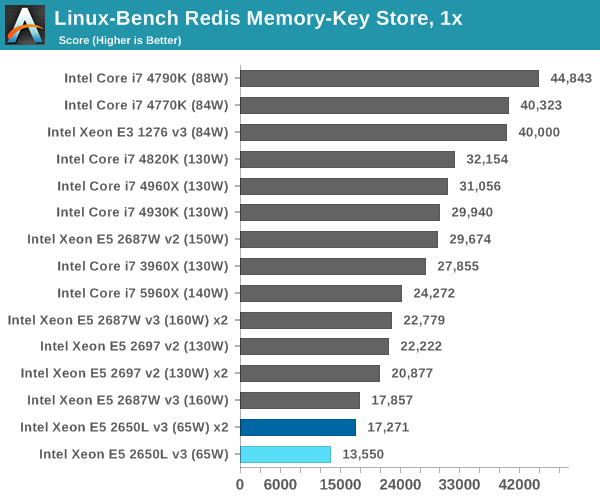
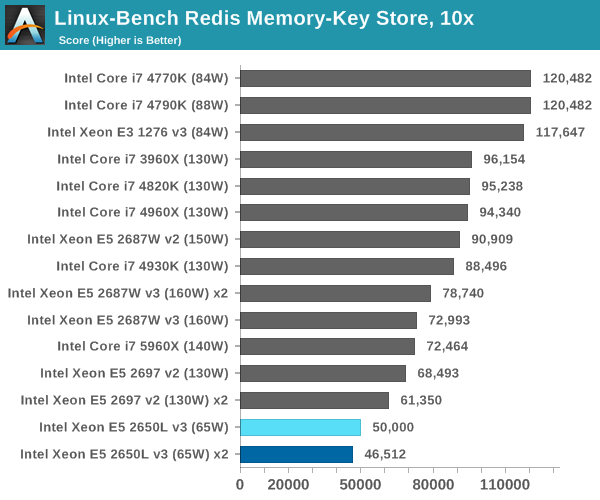
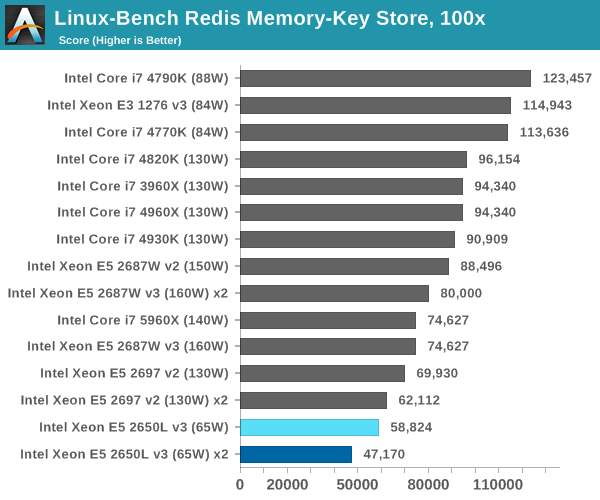










52 Comments
View All Comments
colinstu - Thursday, November 6, 2014 - link
that's what I was thinking tooFlunk - Thursday, November 6, 2014 - link
It's a bit annoying, that despite it's ability to produce 16-core behemoths, Intel is still only setting 4-core chips in it's mainstream line. There is plenty of room for product differentiation here, but I guess lack of competition means Intel doesn't have any reason to add cores.tim851 - Thursday, November 6, 2014 - link
> but I guess lack of competition means Intel doesn't have any reason to add coresYup.
That's why it's lame to be a fanboy. You want many companies to succeed in a market with good product substitution.
SuperVeloce - Friday, November 7, 2014 - link
Mainstream line does not need more than 4 HT cores. If you need more, haswell-E and haswell-EP are available to you. 5820k is low cost if you want or have need for a x99 chipset and ddr4.Black Obsidian - Friday, November 7, 2014 - link
Yeah, it's not lack of competition, it's lack of any good reason whatsoever to sell >4 cores into the mainstream market. Only a vanishingly tiny percentage of users can even fully utilize 4 cores; for those who can (and could use more), there exists both the enthusiast desktop and Xeon workstation segments.Wolfpup - Thursday, November 6, 2014 - link
This is insane. You can now have TWELVE Haswell cores FOR LESS POWER THAN MY 2004 PRESCOTT Pentium 4!That is freaking amazing.
And while it's hopeless that I'll ever get to run something like this (probably even for a sever at work, much less in a desktop PC like I'd like), it's still freaking amazing to see what's possible :-D
Shadowmaster625 - Thursday, November 6, 2014 - link
In Bioshock, why do several more expensive and newer chips only produce half the minimum framrates vs a 3770K????TeXWiller - Thursday, November 6, 2014 - link
What should be common to all those processors with lower results in Bioshock minimum frame rates is the added latency at the L3 or memory controller/system agent level. An easy test to see how much it can effect test results is to drop the frequency of the memory controller. The effect can be as much as half the performance for a 200 MHz drop, depending on the test (SPECviewperf 12 for me).SanX - Thursday, November 6, 2014 - link
Apple A8 chip costs $18Mediatek 8-core chip costs $12
Intel 8-core chip costs $600-2000
Monopoly rulezz
Guspaz - Thursday, November 6, 2014 - link
You're comparing different parts with different performance sold in different volumes to different markets for different purposes. How many A8 chips would it take to get the performance of an 8-core Haswell chip? 32? 64? The dollars-per-MIPS might not be as different as their overall costs.